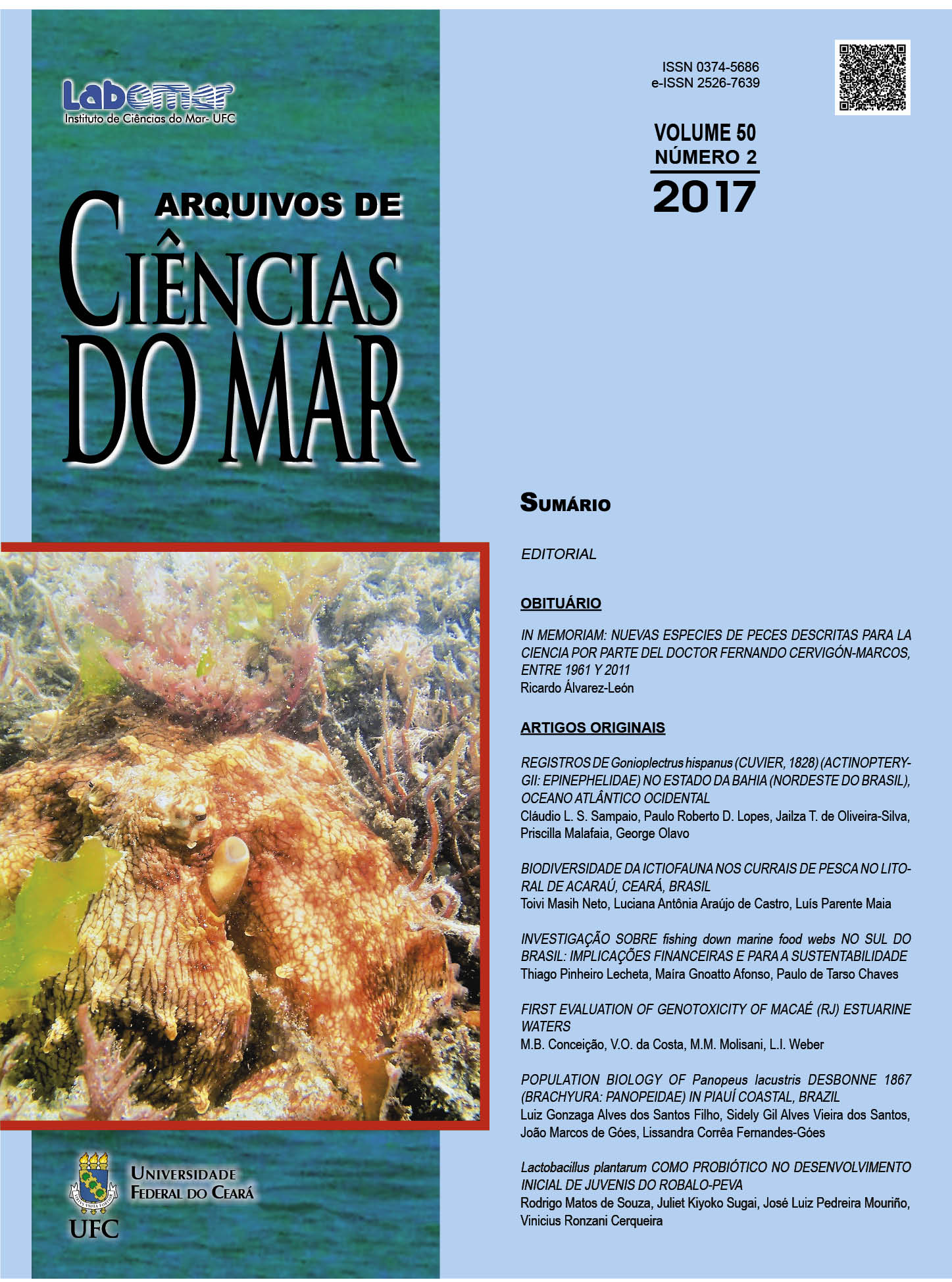Biometric relationships of the brown shrimp Penaeus subtilis (Pérez Farfante, 1967) in the Amazon River continental shelf
DOI:
https://doi.org/10.32360/acmar.v50i2.31148Keywords:
Shrimp fishery, Brazilian north coast, length-weight relationship, regression.Abstract
In the present paper biometrics relationships between measures of body length and body weight of the brow shrimp Penaeus subtilis (Pérez Farfante, 1967) in the Amazon River continental shelf, were estimated. Samples obtained on board of the research vessel Alm. Paulo Moreira as well as samples obtained on the landings at the fishing companies in Belém, from 1995 to 1998 were used in the analysis. The equations were fitted utilizing the linear and non linear regression techniques based on the least squares and maximum likelihood methods respectively. Regressions were estimated for females and males taking in account the data over the entire period, grouped by quarter and year. It was found that females are larger than males and significant differences between the curves for the several regressions for males and females were verified. Expressive differences between the parameters estimated here and the parameters presented by other authors in previous studies were also found. The values of the condition factor were always higher for larger individuals, suggesting the presence of mature individuals throughout the year, but to a lesser extend in the first trimester.
Downloads
Downloads
Published
How to Cite
Issue
Section
License
1. Proposta de Política para Periódicos de Acesso Livre
Autores que publicam nesta revista concordam com os seguintes termos:
- Autores mantém os direitos autorais e concedem à revista o direito de primeira publicação, com o trabalho simultaneamente licenciado sob a Licença Creative Commons Attribution que permite o compartilhamento do trabalho com reconhecimento da autoria e publicação inicial nesta revista.
- Autores têm autorização para assumir contratos adicionais separadamente, para distribuição não-exclusiva da versão do trabalho publicada nesta revista (ex.: publicar em repositório institucional ou como capítulo de livro), com reconhecimento de autoria e publicação inicial nesta revista.
- Autores têm permissão e são estimulados a publicar e distribuir seu trabalho online (ex.: em repositórios institucionais ou na sua página pessoal) a qualquer ponto antes ou durante o processo editorial, já que isso pode gerar alterações produtivas, bem como aumentar o impacto e a citação do trabalho publicado (Veja O Efeito do Acesso Livre).

